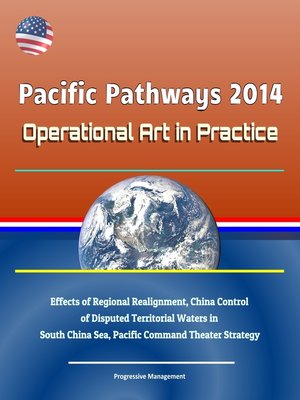Pacific Pathways 2014
ebook ∣ Operational Art in Practice--Effects of Regional Realignment, China Control of Disputed Territorial Waters in South China Sea, Pacific Command Theater Strategy

Sign up to save your library
With an OverDrive account, you can save your favorite libraries for at-a-glance information about availability. Find out more about OverDrive accounts.
Find this title in Libby, the library reading app by OverDrive.



Search for a digital library with this title
Title found at these libraries:
| Library Name | Distance |
|---|---|
| Loading... |
This report has been professionally converted for accurate flowing-text e-book format reproduction. This study uses Pacific Pathways 2014 as a method to describe operational art as it exists in the real world. Though focused on events that transpired in the Pacific theater, the lessons provided in this work are relevant to any planner seeking to understand how operational art actually works. The environment military planners operate in is inherently complex. Planners use operational art to gather a rich understanding of the environment and the strategic guidance provided by national and military leaders. Operational art links this broad and conceptual strategic guidance to tangible tactical action. Masterful employment of operational art provides cognitive space for subordinate organizations to think, act, and adapt.
This research focuses on the application of operational art in conjunction with the Pivot to the Pacific, a seemingly bland initiative that would prove decisive in defining the Army's new role outside of major conflict. This research provides an example of planning in the real world, an environment categorized by bureaucratic friction and complexity. The primary research question is how the United States Army employed operational art to support the Pivot to the Pacific. The secondary research question is what gaps exist between strategic concepts and tactical execution.
In isolation, the Army's definition of operational art depicts a straightforward process conducted in a sterile environment, where planning focuses on "the pursuit of strategic objectives, in whole or in part, through the arrangement of tactical actions in time, space, and purpose." In practice, such clean conditions can never be replicated. Operational planning teams leverage limited information in a time and resource constrained environment, making their best effort to distill uncertainty into executable tactical actions. This research provides a tangible example of contemporary operating art. Conclusions derived from the intended and unintended consequences of Pacific Pathways 2014 are relevant to any planner, at any echelon, facing an ill-defined and ambiguous obstacle with little guidance from a higher headquarters.







